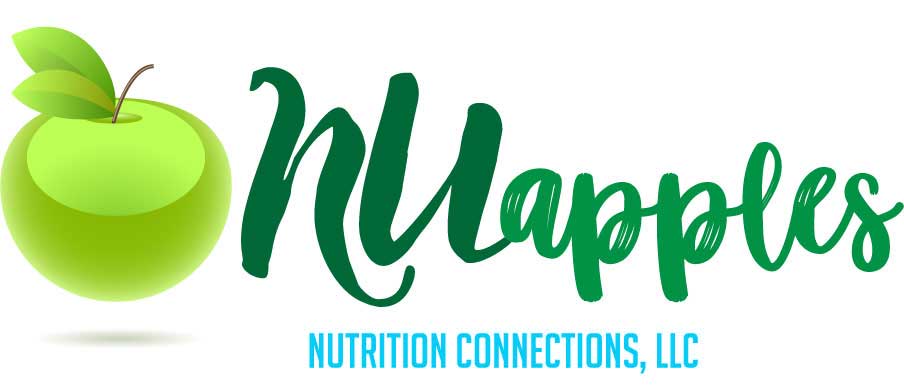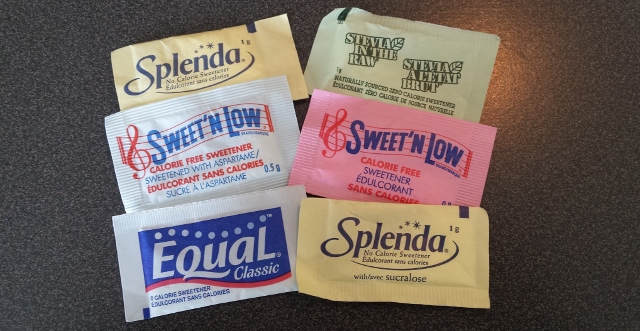The various varieties of Sugar Substitutes/Artificial Sweeteners rather it is the pink, green, yellow, or blue packets has come under such scrutiny to the point it has left me questioning which one if any should I choose.
Sugar Substitutes are nothing more than a food additive that provides a sweet taste of sugar without adding calories. Sugar Substitutes are usually referred to additives derived from “natural” sources i.e. (Stevia) and Artificial Sweeteners are derived from “synthetic” sources i.e. (Equal). In my clinical practice I frequently recommend the use of Sugar Subs or artificial sweeteners for both weight management and diabetic meal planning due to the extraordinary sweetening power and zero calories. However, lately there has been reports regarding the association between artificial sweeteners and cancer. Thus, I had to take a deep dive into the literature to reassure I was making sound evidence based nutritional recommendations.
First, I was assured by the fact that the National Cancer Institute supported all the decisions made by international regulatory authorities and (USFDA) regarding the safety of all food additives. Prior to any food additive made available for sale it must undergo a process of vicious testing before being approved by the U.S. Food and Drug Administration as being safe for the American public.
The Pink: known as “Saccharin” Sweet N Low, which is the older sweetener to date and is 300 to 700 times sweeter than sugar. A study conducted in 1970 associated saccharin with causing bladder cancer in rats placing it on the US National Toxicology Program’s Report. Each packet of Sweet N Low carried a potential carcinogen warning. As a result, in 1977 Congress mandated further testing. Studies conducted in 2000 showed that the cancer incident in rats was irrelevant to humans. There was no evidence found that it causes cancer in humans, the FDA deemed it as safe and all warnings removed from the packets. Furthermore, a research study published in March 24, 2015 by the University of Florida found that saccharin can inhibit cancer cell growth. Yes, I was convinced of its safety, the chemical that was once labeled a potential carcinogen now has the potential as an anti-cancer agent.
The Yellow: known as “Sucralose”, Splenda, the FDA approved it as a sweetening agent in 1998. Sucralose has undergone 110 safety studies prior to being approved as safe for use. However, in 2016 a random study reported an increase incident of blood cell tumors in rats fed high dosage of sucralose. After careful review of the study findings, the FDA identified scientific shortcomings related to these results, and maintained its conclusion.
The Blue: Known as “Aspartame”, Equal, Nutra Sweet was approved in 1981. After numerous tests was shown it did not cause cancer or any other negative effects in rats. However, in 2005, a study raised the possibility that at high dosages may cause lymphoma and leukemic in rats. The FDA once again found short comings in the study results and did not alter its conclusions as being safe. In 2006, NCI examined human data from the NIH Diet and Health Study of over half a million retirees indicated aspartame was not associated with cancer. There is a caution with those with Phenylketonuria (PKU) a hereditary condition where you are unable to metabolize Phenylalanine found in Aspartames. For these individuals Aspartame must be avoided.
The Green: Known as “Stevia” a natural sugar sub derived from the Stevia plant. Since 2008 the FDA has stated it has been on the Generally Recognized as Safe list (GRAS) because it is a natural substance, there is no need for testing to ensure its safety.
Evidence based research over the years have proved that our current Sugar Substitutes/Artificial Sweeteners are safe for use and have repeatedly shown do not cause or increase the risk of developing cancer. As a result, I will continue to choose the Blue, how about you…


Thank you for clearing up a lot of confusion! My grandmother loves Splenda!
You are so welcomed!
Thanks for doing ALL the research for me. I love ❤️ my Equal sugar sub.
I am not a fan of the other sugar subs
and I have try most of , I have to use so much of them. I am glad that the testing have proven them safe. Thanks again for clearing this debate up.
You are so welcome Mark P. Glad I was able to help in some way and thank you for following nuapples.com
Today, with the great amount of attention given to calorie, sugar, and carbohydrate intake, many people do not even consider those options. Instead, numerous sugar substitutes are available, giving consumers the choice between the yellow packet (sucralose), blue packet (aspartame), or pink packet (saccharin). Many have a preference as to which best suits their taste buds and waistline. And now, in addition to those three choices, there s a relatively new calorie-free sugar substitute available: stevia, served in a green packet.
Thank you so very much for your very informative comment. You are absolutely correct as indicated in the article stevia is an option for selecting non-nutritive alternatives. The article’s main focus was on the artificial options. Stevia is not considered an ARTIFICIAL option in that it is a Natural Sweetener, therefore I briefly mentioned it. In addition to Stevia, there are a few more NATURAL “low calorie” options to select from made of coconut. I have tried a few of these, however they offer 16 Kcal per serving whereas a teaspoon of sugar offers the same 16 Kcal which defeats the purpose of eliminating calories. Thank you for the comment.
Today, with the great amount of attention given to calorie, sugar, and carbohydrate intake, many people do 4 not even consider those options. Instead, numerous sugar substitutes are available, giving consumers the choice between the yellow packet (sucralose), blue packet (aspartame), or pink packet (saccharin). Many have a preference as to which best suits their taste buds and waistline. And now, in addition to those three choices, there s a relatively new calorie-free sugar substitute available: stevia, served in a green packet.
Thank you for your response
Thank you Jeff for your comments!
Make a more new posts please 🙂
___
Sanny
Good Morning: Thank You so much for following my Blog I sincerely appreciate it! I try to post two articles a month, will try to increase at your suggestion. I hope they are informative and helpful for you in your quest to achieve optimal health! If you have any questions regarding Nutrition please feel free to ask I am here…
Spot on with this write-up, I truly think this website needs way more consideration. I抣l most likely be again to read far more, thanks for that info.
Thank You. Appreciate the words of encouragement!
Hi my friend! I want to say that this article is amazing, nice written and include approximately all important infos. I’d like to see more posts like this.
Thanks
Great web site you have got here.. It’s hard to find excellent writing like yours nowadays. I seriously appreciate individuals like you! Take care!!|
Took me time to read all the feedback, however I really loved the article. It proved to be very useful to me and I am positive to all the commenters here! It is always good when you cannot only learn, but additionally engaged! I am certain you had pleasure writing this article. Anyway, in my language, there usually are not much good source like this.
What’s up to all, how is the whole thing, I think every one is getting more from this site, and your
views are pleasant in support of new viewers.
Thank you!